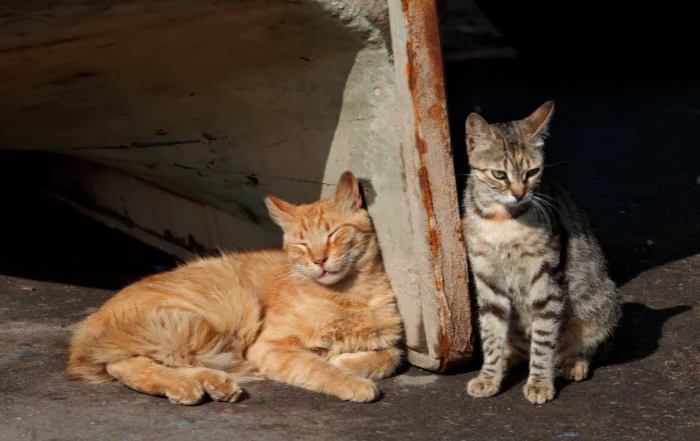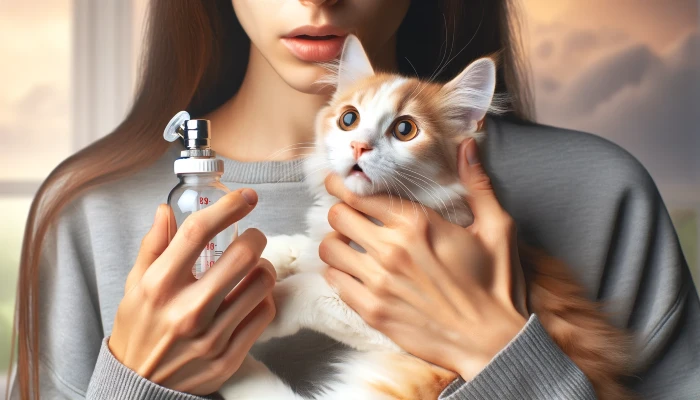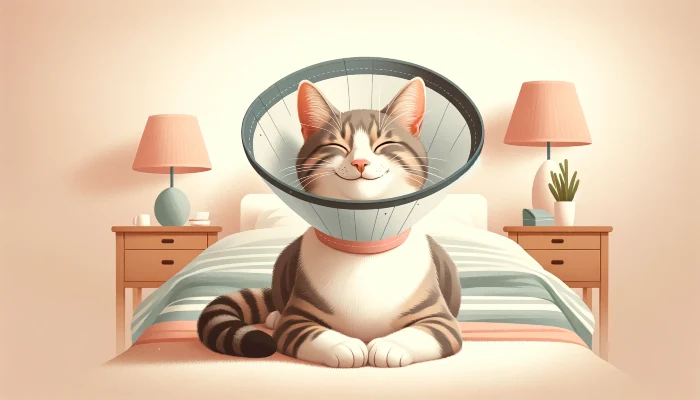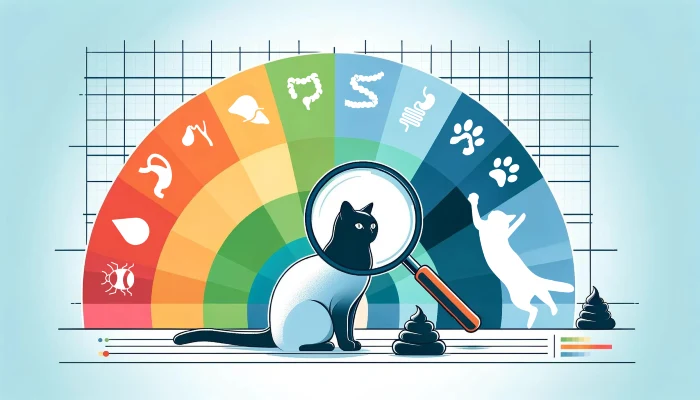Feral cats can be found worldwide, and their population continues to grow rapidly. Without caring people to take the time needed to help control the population, it will continue to grow.
Female cats can have 2–3 litters each year.
One female cat can have 100 or more kittens per year, so it’s important that we do our part to get as many of these feral girls spayed to reduce the amount of new kittens being born on the street.
Here are five ways you can help…
Take advantage of TNR programs (Trap, Neuter, Release).
Contact your local Humane Society or Animal Shelters in your area and ask about any TNR Programs (Trap, Neuter, Release) that are available.
These programs use TNR in order to spay and neuter as many of the feral cats as possible.
During the surgery, the cats will also have the tip of their ear removed, so everyone knows they were neutered.
Once everything is done, they’re released back to the same place they were before.
These programs are very successful in controlling the population. Some people think just removing the cats and either euthanizing them or relocating them will solve the feral cats’ problem.
It doesn’t solve anything! And I’ll explain why.
With the existing colony gone, another colony will take over. That’s how it works. You remove one group of stray cats, and within a few days you’ll start seeing a new group move in.
When you call any TNR program, they’ll explain how to trap the cats using a Havahart trap. They will also refer you to a few local vets that provide free (city sponsored) spay or neuter services. Now, not all cities offer free services, but they all have strong plans setup to provide, at the very least, deeply discounted low-cost spay or neutering for strays.
Talk to neighbors to build a support network.
Talk to your neighbors or apartment community to see if there are any other people that would be interested in helping with the TNR Program and helping the feral cats in their neighborhood, the more people that get involved the better.
It’s also a good idea to talk to the neighbors that don’t want the feral cats around. This way you can educate while addressing issues.
A couple of the biggest complaints most have…
- The cats use gardens and landscaping as a toilet.
- They get into their yards and put their pets at risk for injury and disease.
- They’re likely carrying fleas.
This open communication will give you an opportunity to address these, often very, valid points and offer some suggestions.
Here are a couple ideas you can share:
- Place barriers in gardens and landscaping to keep the cats from using them as a toilet, they can use a product called a scatmat, or place a layer of rough surfaced stones.
- They can also use a scent deterrent, which is a product will an offensive odor that repels cats, dogs and wildlife. These items can be found in garden centers and online.
Try to find the kittens real homes.
You can try trapping the younger kittens and taming them, so they can be adopted. This is only recommended for kittens 6 months or younger because adult feral cats are usually too distrusting and wild to be tamed, and don’t adapt well to indoor life.
It’s dangerous to attempt to touch or handle an adult feral cat, they can inflict serious injuries with their teeth and nails.
If you already have pets at home, it’s important that you isolate any feral cats or kittens in an area out of reach of your pets due to the risk of exposing them to any diseases, infections or parasites the feral kitties may be harboring.
Only let them interact after the feral kitties have been fully cleared by a vet.
Offer some makeshift housing for rough weather.
Construct some outdoor shelters that the feral cats can use during cold or wet weather.
You can find several designs online to use, or get creative and make your own (have fun with it). Some people will buy small dog houses like the dog igloo to use as shelters.
Having any shelter during bad weather will save the lives of many feral cats. Be sure to avoid placing any shelters near any of your neighbors that don’t want the cats around their property.

You can feed the strays, but, do it strategically.
When it comes to providing food and water for your feral colony, it’s best not to leave it out all the time. Leaving it out encourages wildlife to come into the area to eat like raccoons, opossums, rats, mice, foxes and coyotes.
Not only are some of these animals a nuisance, some pose a threat to people and pets when they seek more food throughout the neighborhood.
It’s better to set up a schedule for feeding the cats, this can be done once a day or twice a day. Leave the food and water out for 45 minutes and then pick it up and remove until the next feeding.
This will force the feral cats to adjust to the schedule and food won’t be wasted or left to encourage other animals.
Be sure to choose an area that isn’t close to any neighbors that don’t want the cats on their property.
If you do start a feeding schedule, you must stick to it because the cats will become dependent on it.
Again, this is where finding any neighbors in your area that are interested in helping feral cats will pay off because they can take over for you when you’re unavailable.
Kudos for your desire to help these feral kitties!
More To Discover
After all, they never asked to live this kind of life. It certainly isn’t an easy one and most won’t live more than 1 or 2 years, so the more people that get interested in doing their part to help out, the fewer new feral kittens are brought into the world. That means getting closer to the day when there won’t be any feral cats.
For more information on ways you can help feral cats in your neighborhood, visit the following organizations:
- ASPCA: https://www.aspc.org
- Humane Society of The United States: https://www.humanesociety.org
6 Facts About Feral Cats
- Feral cats are not technically strays, they are the result of unfixed domestic cats that have their kittens on the street, and they receive no socialization with people.
- Feral cats live in tight-knit groups called colonies.
- Feral cats live very hard lives and live a much shorter life than a pet cat, they are vulnerable to contagious diseases like Feline Leukemia, FIV (Feline AIDS), FIP (Feline Infectious Peritonitis), and Herpes Viral Conjunctivitis along with parasites, getting hit by cars, infections from fight wounds and poisoning by people that don’t want them around.
- Within 7 years, one pair of feral cats can have upwards of 420,000 kittens.
- 80% of feral kittens born will not survive to see their first birthday.
- Studies have shown that feral cats pose no public health threat.
























